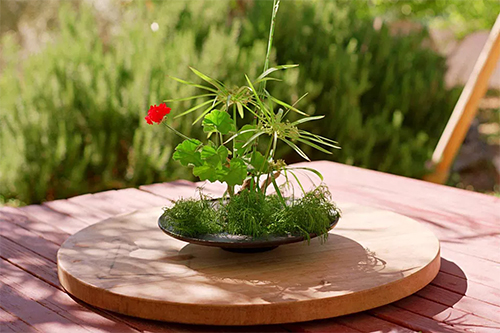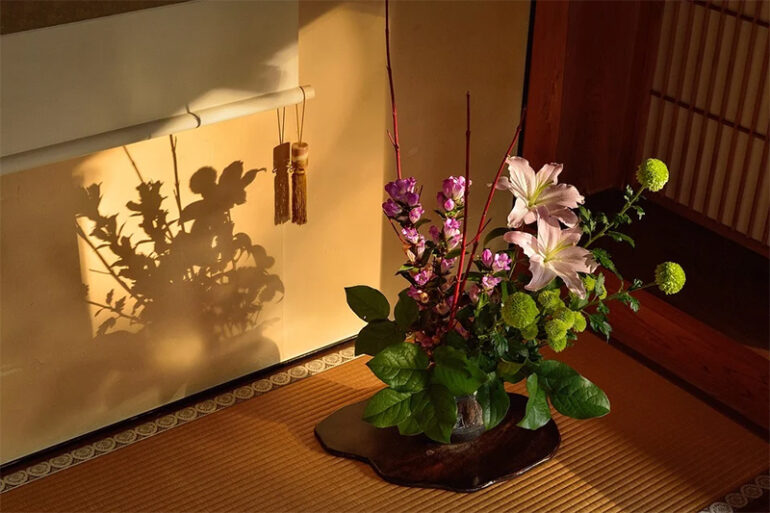Ikebana is the Japanese art of arranging flowers, together with branches, stems, and leaves. By doing this, flowers and plants are revived, infused with life, and transformed into a work of art. Unlike the western practice of randomly arranging flowers on a vase, ikebana focuses on the innate character of blooms working in unison with other living materials to manifest emotion. As an art form, it elicits emotional responses from those who admire its beauty.
Most people believe that Ikebana originated from the traditional practice of offering flowers that began when Buddhism was introduced to Japan. Soon after, Ikebana became recognized as a flower arrangement form that was welcomed by many. At the same time, ikebana designers cropped up, offering their unique designs and meticulously picked flowers and materials. Today, the art of Ikebana has spread worldwide because of the craftsmanship involved in its arrangement.
The Ikebana style

One may compare Ikebana flower arrangements to sculpture as it factors in form, color, and line during its construction. The finished results are unpredictable as they take on varied forms. These variations differ, from the size of the arrangement starting from a single bloom to the inclusion of other plants, stems, and branches. For the Japanese, flowers and foliage are symbolic and connected to the different seasons. Thus, an Ikebana arrangement takes symbolism and the seasons of the year into account during their creation. For the more contemporary forms of Ikebana, seasonality is still essential, apart from considering where an Ikebana arrangement is created. Its most distinguishing feature is the wide range of materials used, arranged in a unique fashion that captures the eye of anyone who sees it. Occasionally, Ikebana designers (Ikebanists) may trim branches and blooms into varying shapes. The limbs could be arranged in such a manner that they sprout in different directions. The art lies in maintaining balance, no matter how the arrangement is designed. With this type of flower arrangement, the availability of beautiful flowers is not sufficient until they are all utilized artfully to transform them into a beautiful piece of art. It takes skill and creativity to master Ikebana, requiring patience and practice for those who are just discovering the art.
Presentation of Ikebana arrangement
The essential point of Ikebana is the expression of the flowers’ beauty through their arrangement. There is no exact symmetry so that the natural form of the blooms and leaves is accentuated. To place more emphasis on the colors and essence of the flower arrangement, it is ideal to manipulate its shape, curving it slightly.
Learning Ikebana
As earlier mentioned, Ikebana takes skill. Just the same, it is an art form that anyone can practice. Nonetheless, it is essential to grasp the basics, as in other types of art. After that, a person interested in mastering Ikebana can try their hand in creating their own design. As a beginner, fundamental technical skills are taught, including the proper method of cutting flowers and branches, correct placement, and the preservation of the live materials they use.
Apart from its beauty, Ikebana can uplift your mood as it enhances the atmosphere of your home. In essence, this Japanese floral arrangement art form focuses on simplicity and giving value to nature’s beauty in its most basic form.
Photo Attribution:
1st and featured image from https://pixabay.com/photos/japan-k-flower-arrangement-flowers-4859271/
2nd image from https://www.thespruce.com/what-is-ikebana-1316134
